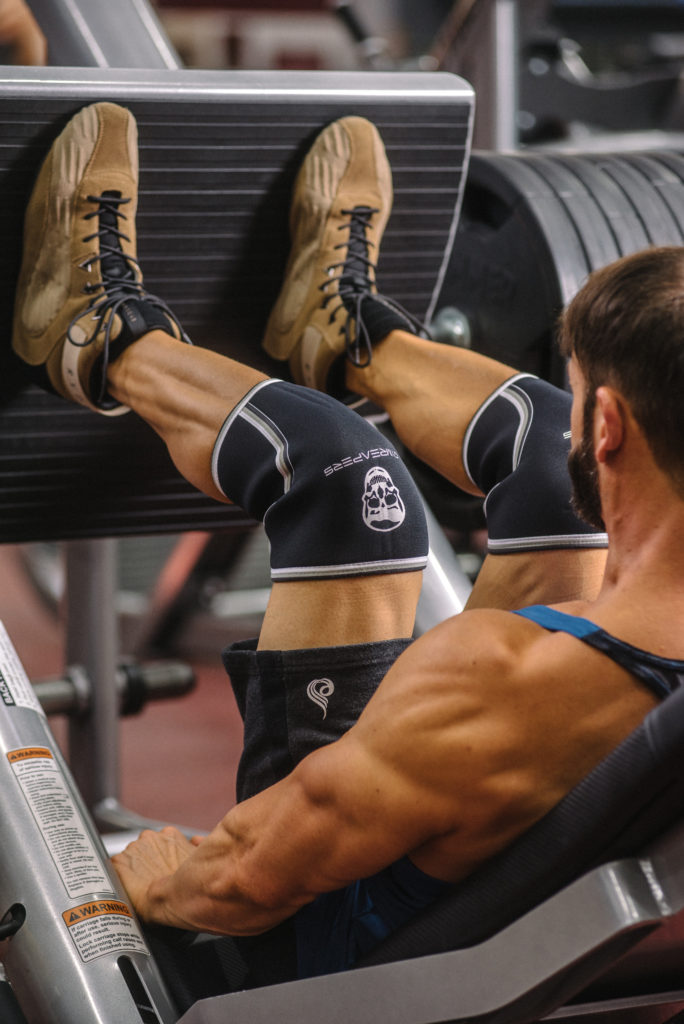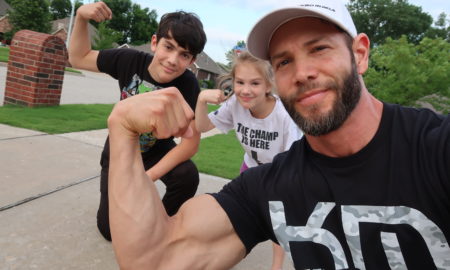
While you might hear some hardcore lifters shout “No days off” the truth is the majority of us need our rest. Many of us work really hard in the gym pushing ourselves to the limit. While our goals might vary from muscle building, strength training, sports performance, or just general health we all want results. Proper nutrition fuels our workouts and the recovery process that follows, but when we rest is when the real magic happens. All the heavy sets, forced reps, slower negatives, drop sets, and methods we use in the gym have the ultimate goal of damaging muscle fibers. Intense resistance exercise, especially the eccentric movements or the lowering of weights, cause microscopic tears in the muscle fibers. You may feel the effect of these tears days after a workout in the form of DOMS (delayed onset muscle soreness). During our rest periods is when the body uses nutrients to repair these tiny tears making the muscle fibers thicker in the process.
.
.
We rest minutes between sets and place days between working the same muscle group, but sometimes a deeper type of recovery process is needed so we can forge new ground. You may have heard the term ‘de-loading’, but not be aware of its importance in your total fitness program. De-loads are typically a week-long of less volume and weight to allow for more recovery. Recovery is needed for more than just muscles, but also tendons, ligaments, the central nervous system, and hormone levels. I prefer to de-load rather than just taking time off the gym because I just like working out but also to maintain what I’ve worked hard to build. I incorporate de-load weeks into my programming every other month. I lift extremely intense for seven weeks then de-load on the eighth week. Doing it this way prevents taking back steps. This deeper recovery will help make you stronger all-around to do new things in the following weeks.
.
.
How to De-load:
.
Do 60-70% less volume (number of sets) and weight than normal. Don’t lift to failure, but stop several reps before. Keep the workouts basic and short. I tend to do my movements slower and really try to feel each rep. Avoid exercises that stress your central nervous systems like heavy deadlifts, barbell squats, and HIIT cardio.
.
.

..
.
Get more out of De-loading:
.
- Warm up and stretch: Since the workouts are shorter spend extra time warming up and stretching especially problem areas. I do some moderate incline walking for 10-15 minutes as a warm followed by some yoga stretches for my lower back and hamstrings. If I am working chest or shoulders I’ll spend extra time with shoulder mobility work.
- Get good sleep: Do your best to get quality sleep. One thing that really helps is to stay off devices several hours before bedtime. Go to bed a little earlier or sleep in just a bit to give your body extra time to repair itself.
- Do steady state cardio: Instead of HIIT or intense cardio stick to moderate recumbent biking or incline walking for your post workout cardio.
- Allow pain areas to rest: We all have our individual pain areas. For me it’s my lower back and lately, my left So when I de-load I lay off movements that put extra stress on my lower back (deadlifts, heavy back squats) and brachioradialis (hammer curls).
- Keep nutrition tight: Since these workouts are lower intensity and are shorter you will be burning less calories than normal. Keep your nutrition on point so you don’t gain any unwanted fat. If you are going to have a treat do it on leg day when you will burning more calories.
- Recovery add-ons: This is the time to incorporate additional recovery techniques such as foam rolling, massages, ice baths, salt baths, cryotherapy, infrared sauna, etc. These things can be beneficial anytime, but if you don’t do them regularly make time during your de-load to try a few things out.
.
.
De-Load sample workouts:
.
Legs:
.

-
- Leg Extension: 3 sets of 12-15 reps
- Leg Press: 3 sets of 12-15 reps (stopping at 90 degrees)
- Hack Squats: 3 sets of 12 reps
- Single-Leg Extensions: 3 sets of 15 reps, each side
- Seated Leg Curl: 4 sets of 12-15 reps
- Standing Calf Raise: 4 sets of 12-15 reps
.
.
Back:
.

- Wide Pull Downs: 3 sets of 12-15 reps
- Seated Rows: 3 sets of 12 reps (wide, elbows out)
- DB Rows 3 sets of 15 reps, each side
- Straight Arm Pulldowns: 3 sets of 12-15 reps (hinged)
- Concentration Curls: 3 sets of 12-15 reps, each side
- Dual Cable Curls: 3 sets of 12-15 reps
After your short de-load week you’ll be itching to step the intensity back up. This is also a great time to reset mentally. Incorporating these planned de-load weeks every other month will help reduce the risk of injury and prime your body for the best results in weeks to come.

Annihilate to Motivate,
Michael Wittig, ISSA CPT
IPE Natural Pro 3x Champ
IG: @WittigWorks
FB: @WittigWorks
TW: @WittigWorks
.























You must be logged in to post a comment Login